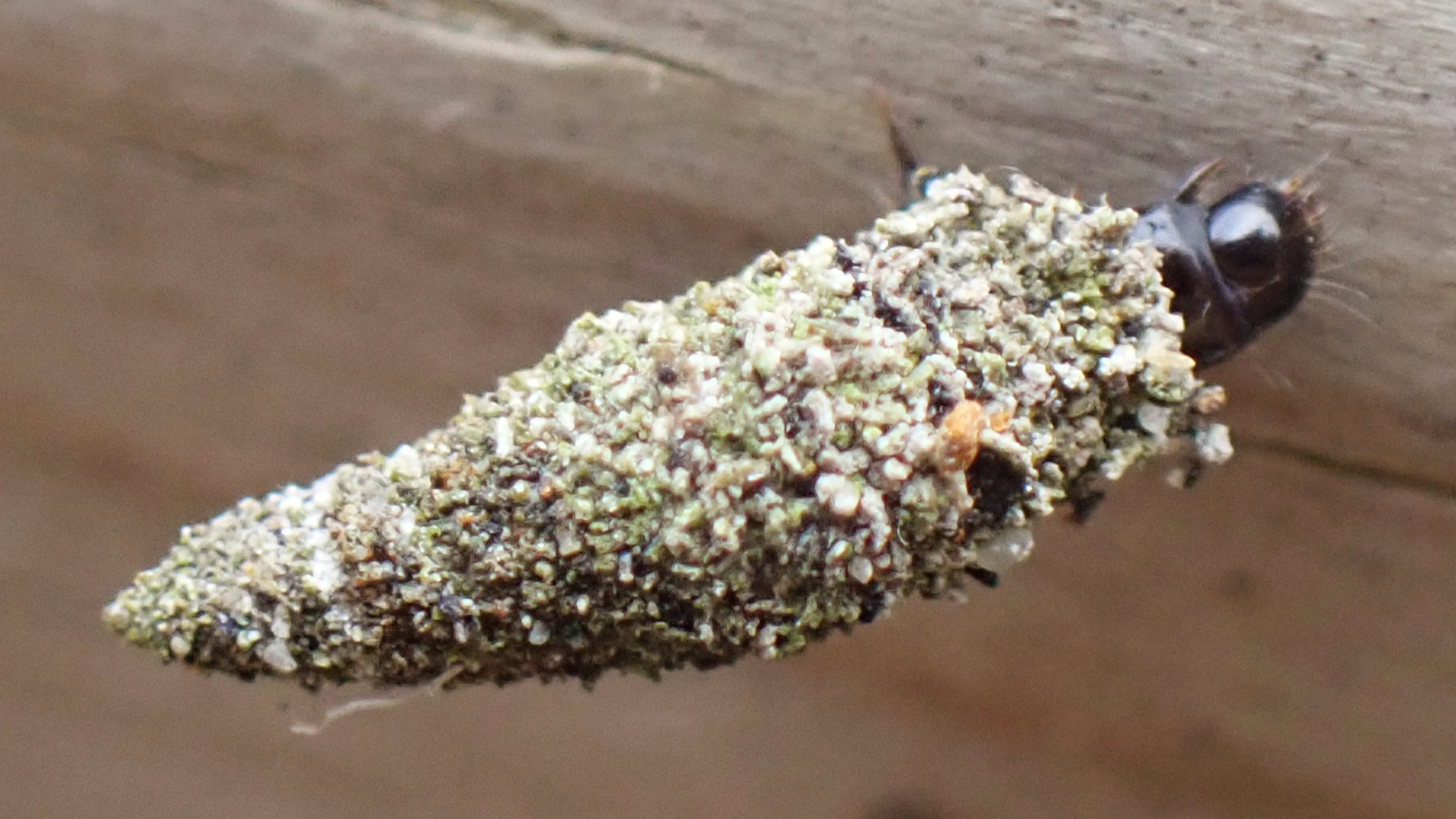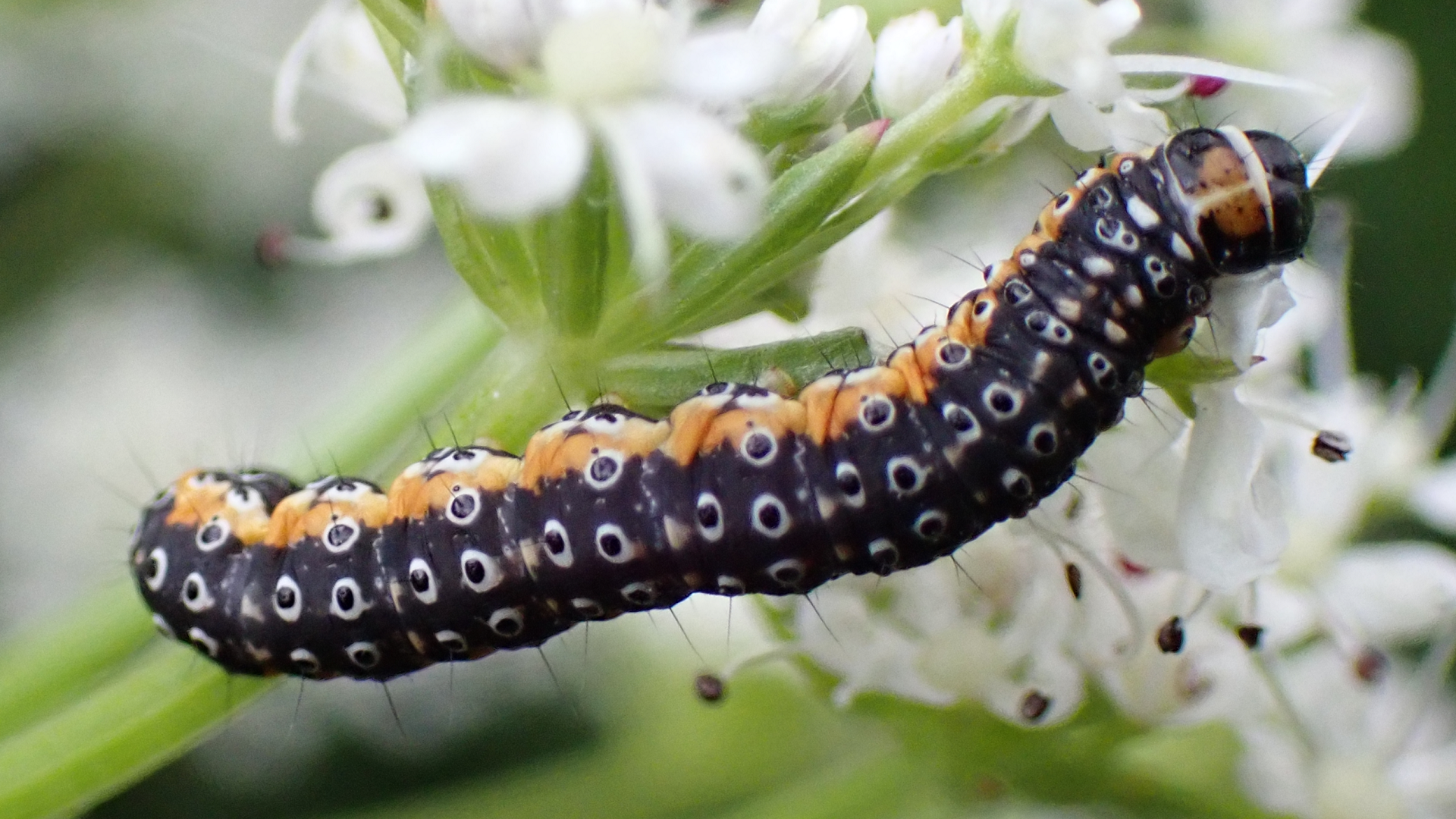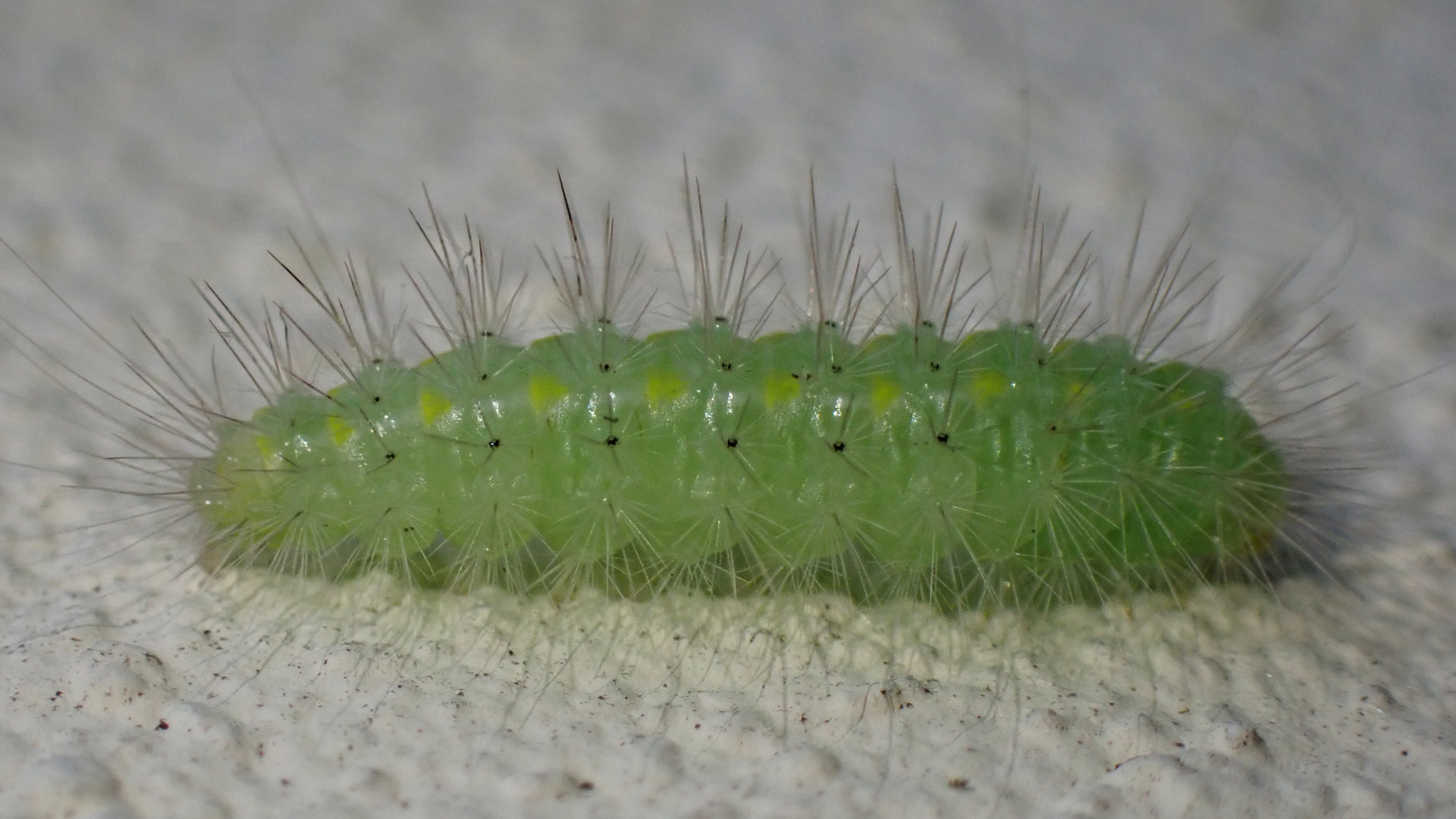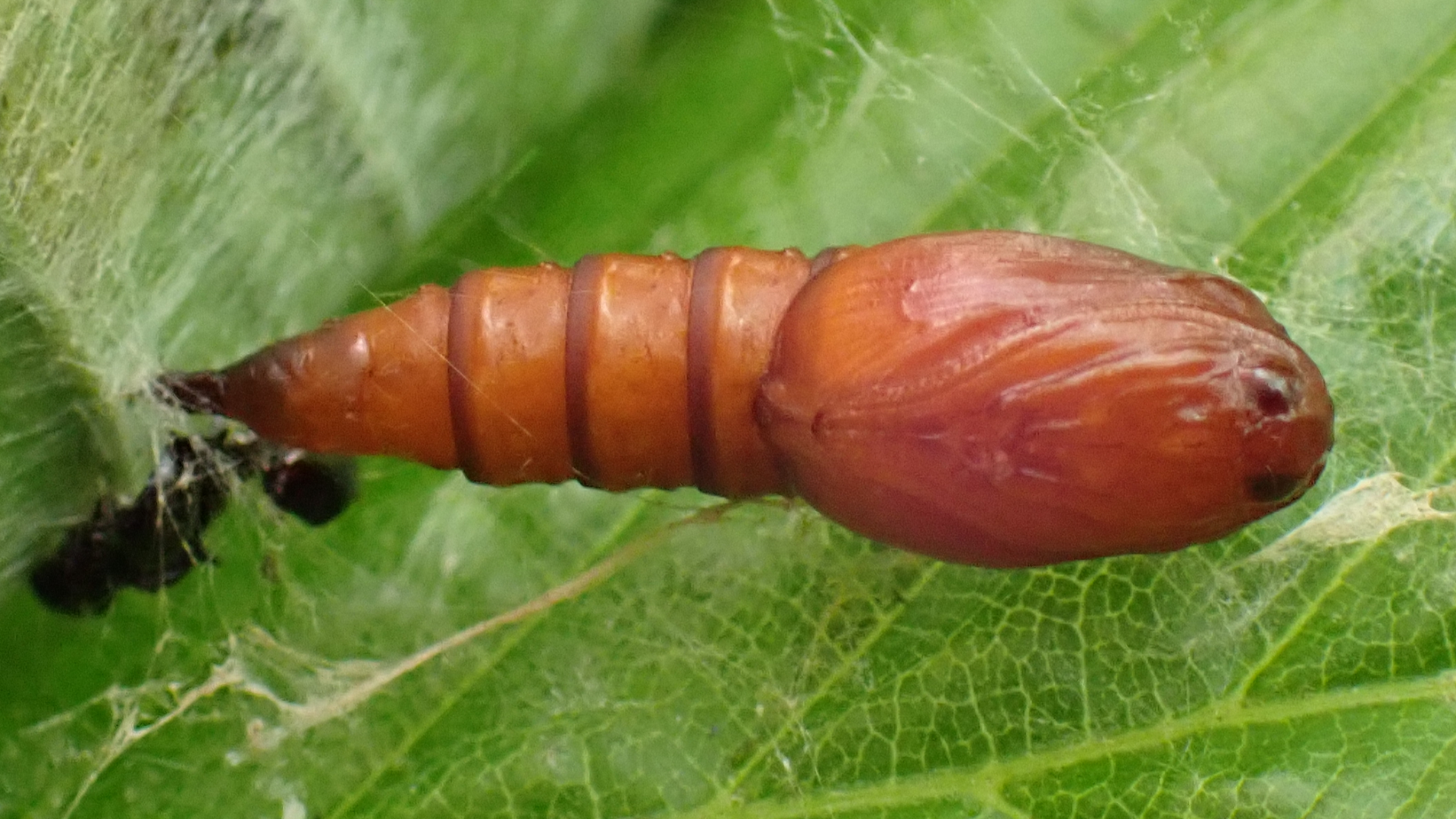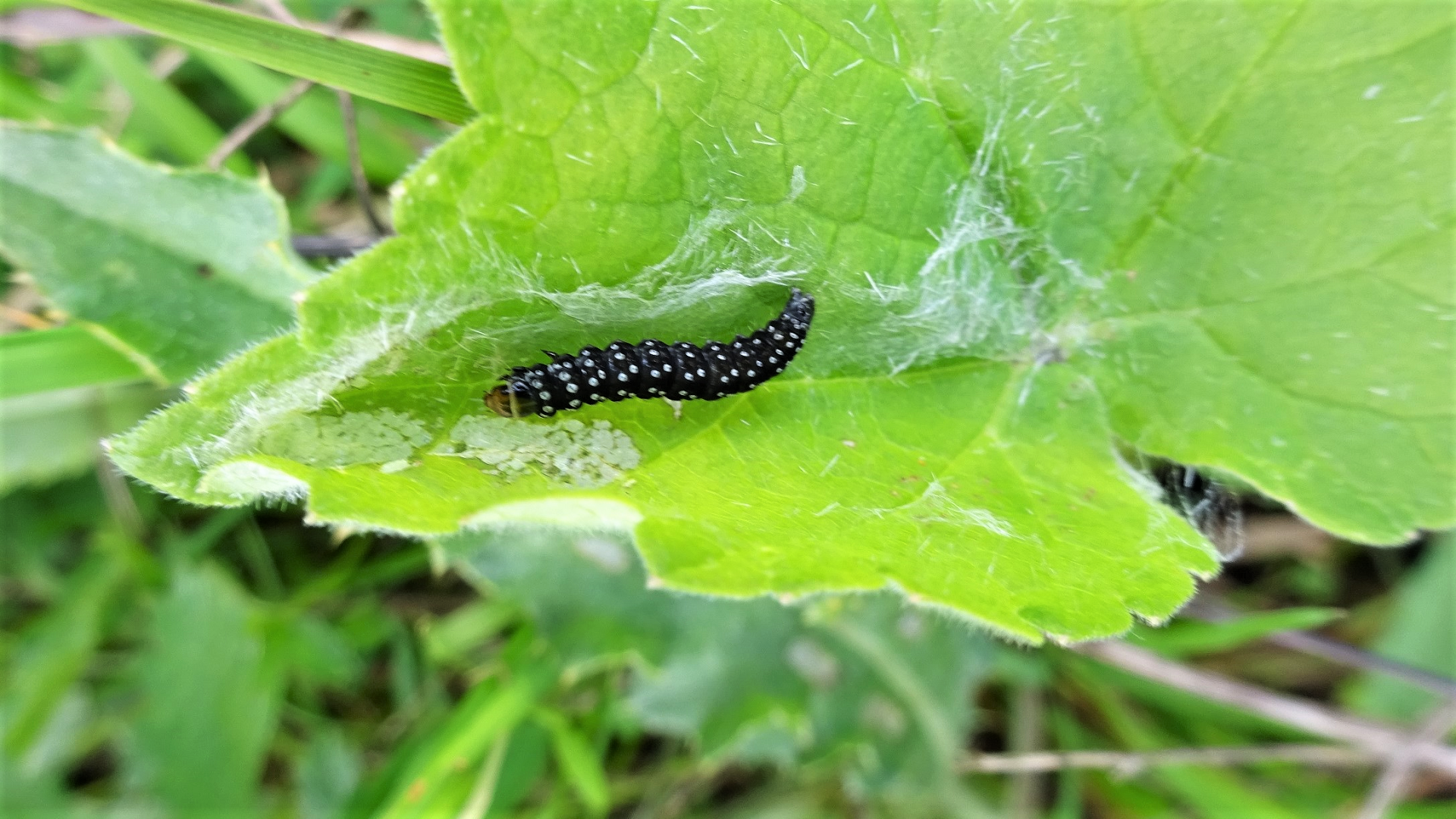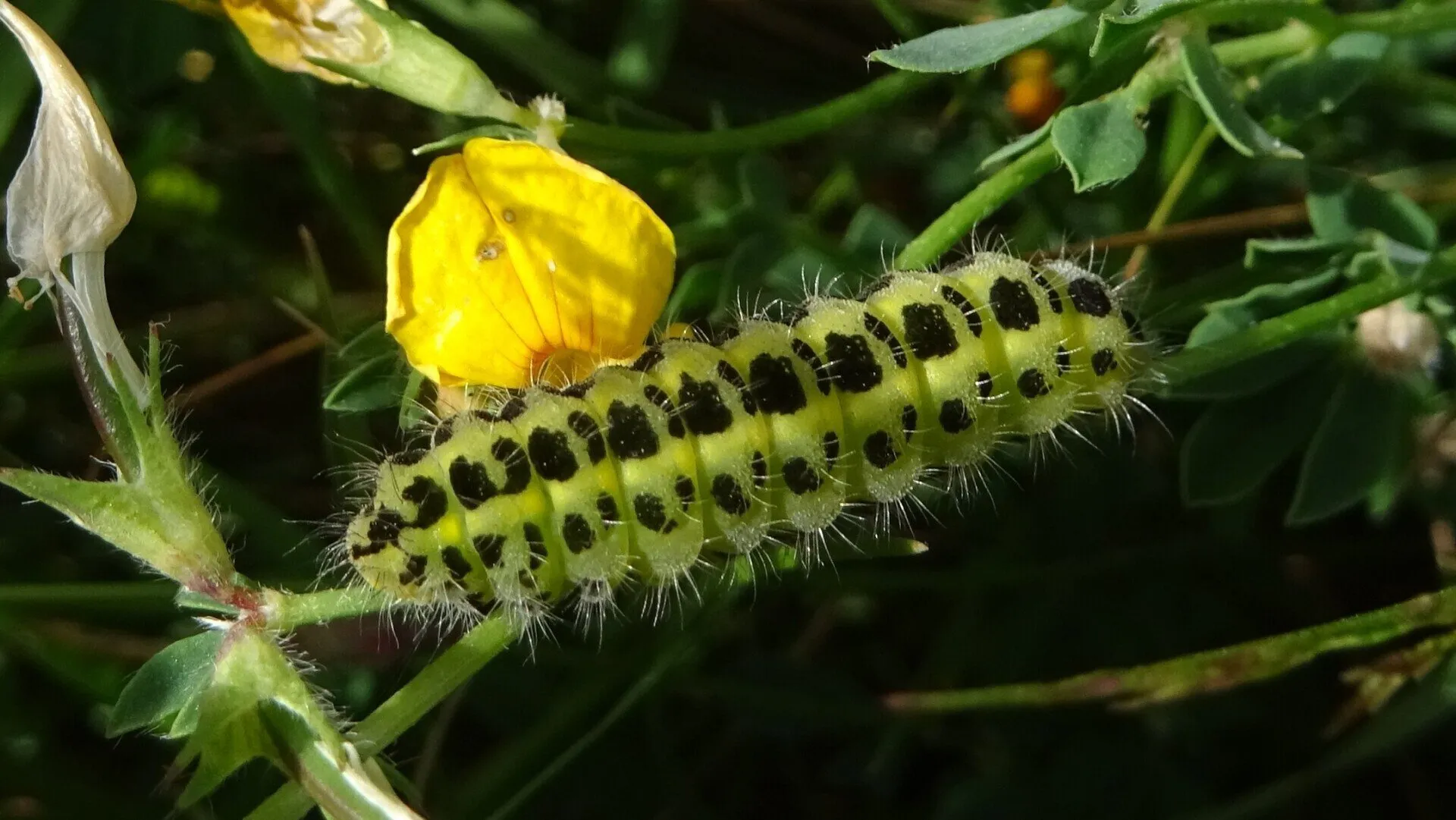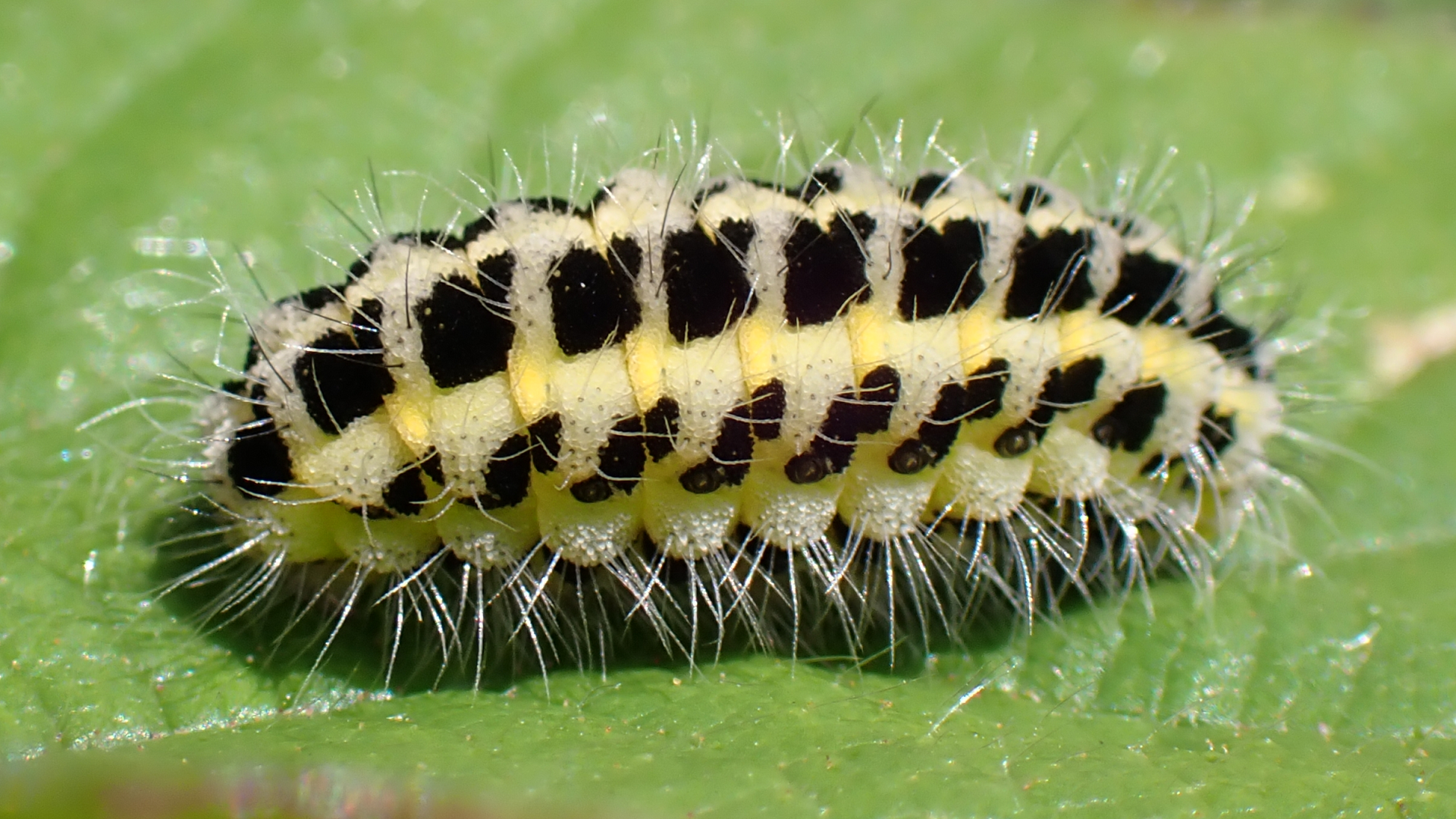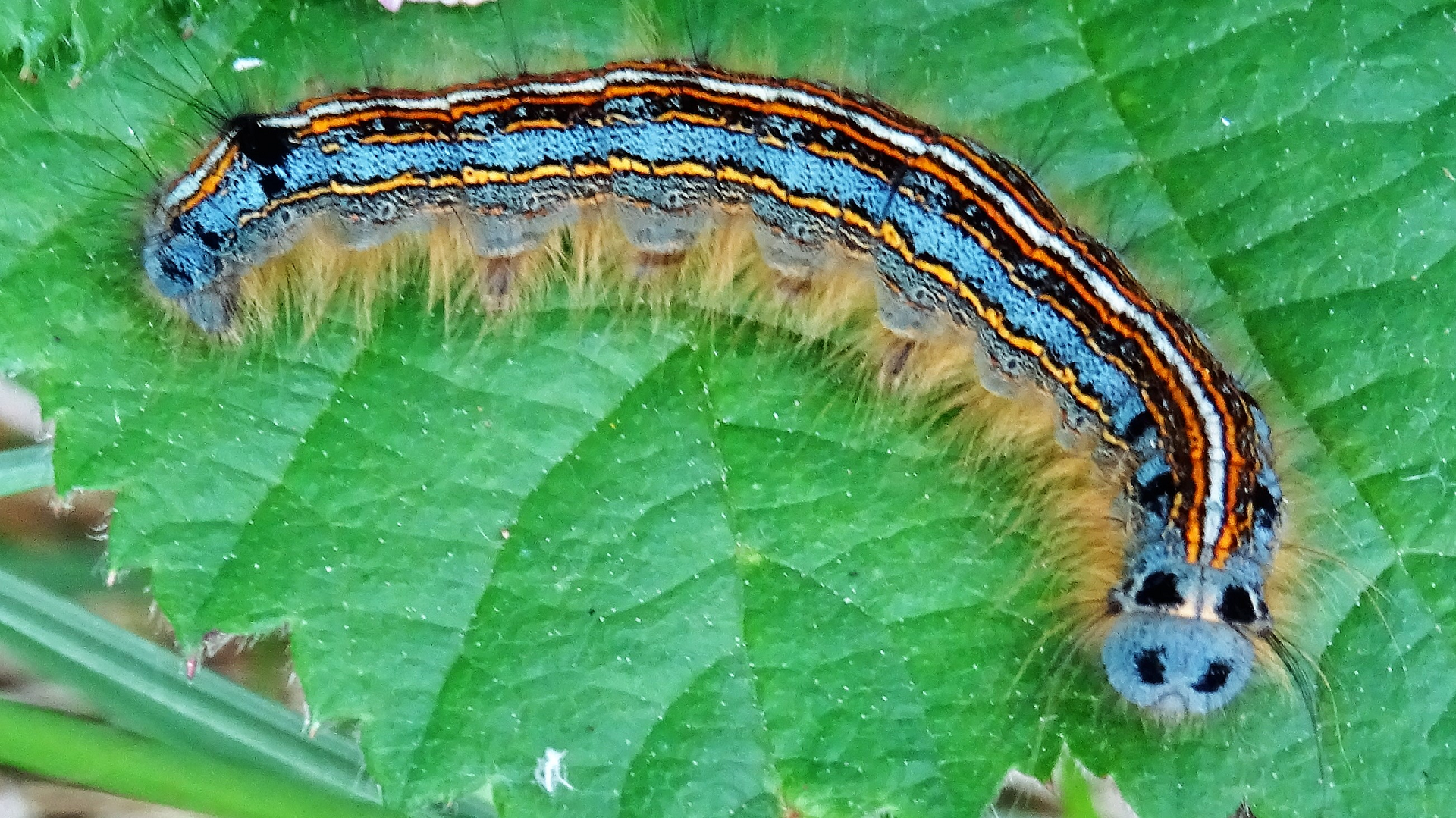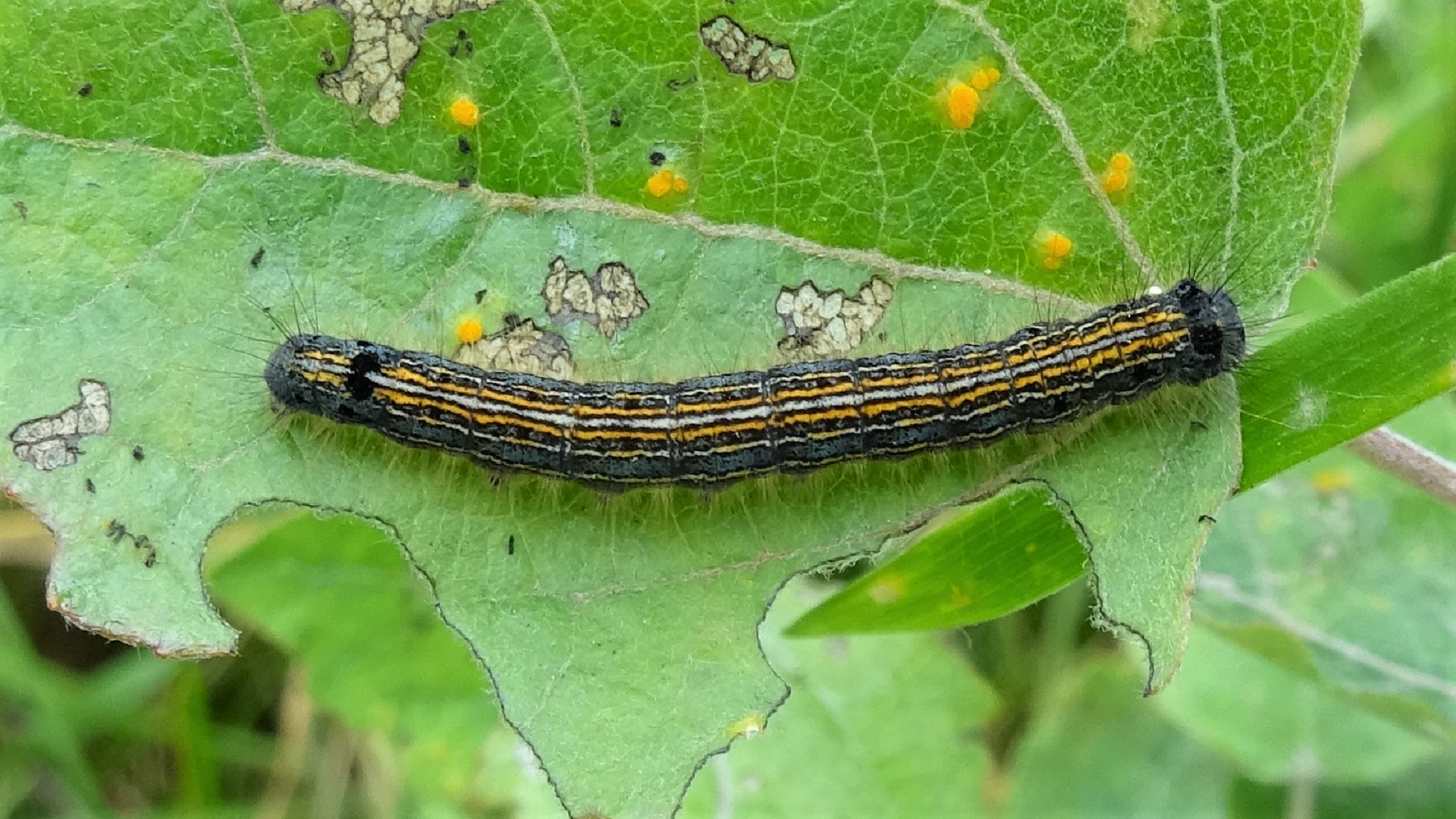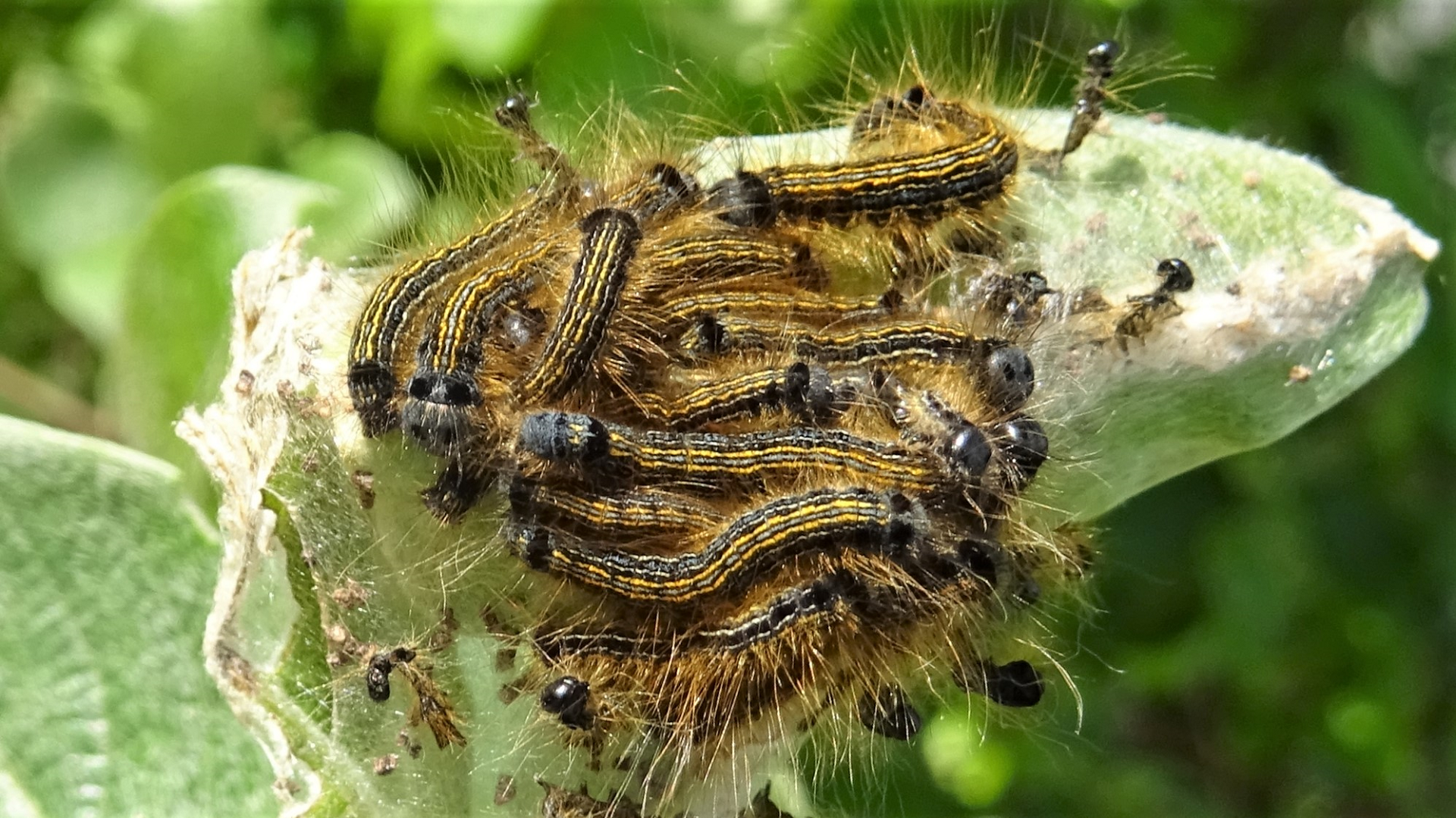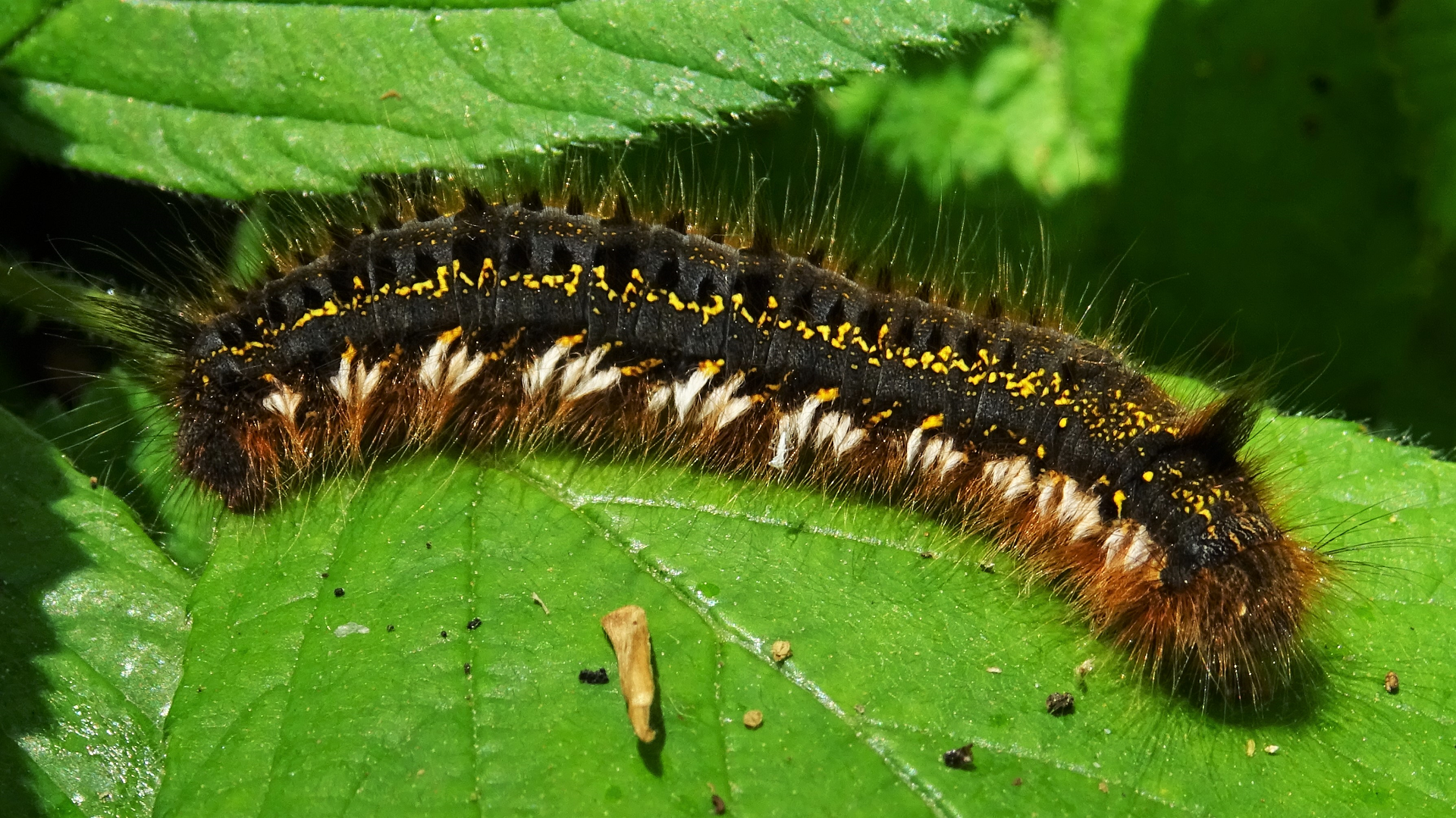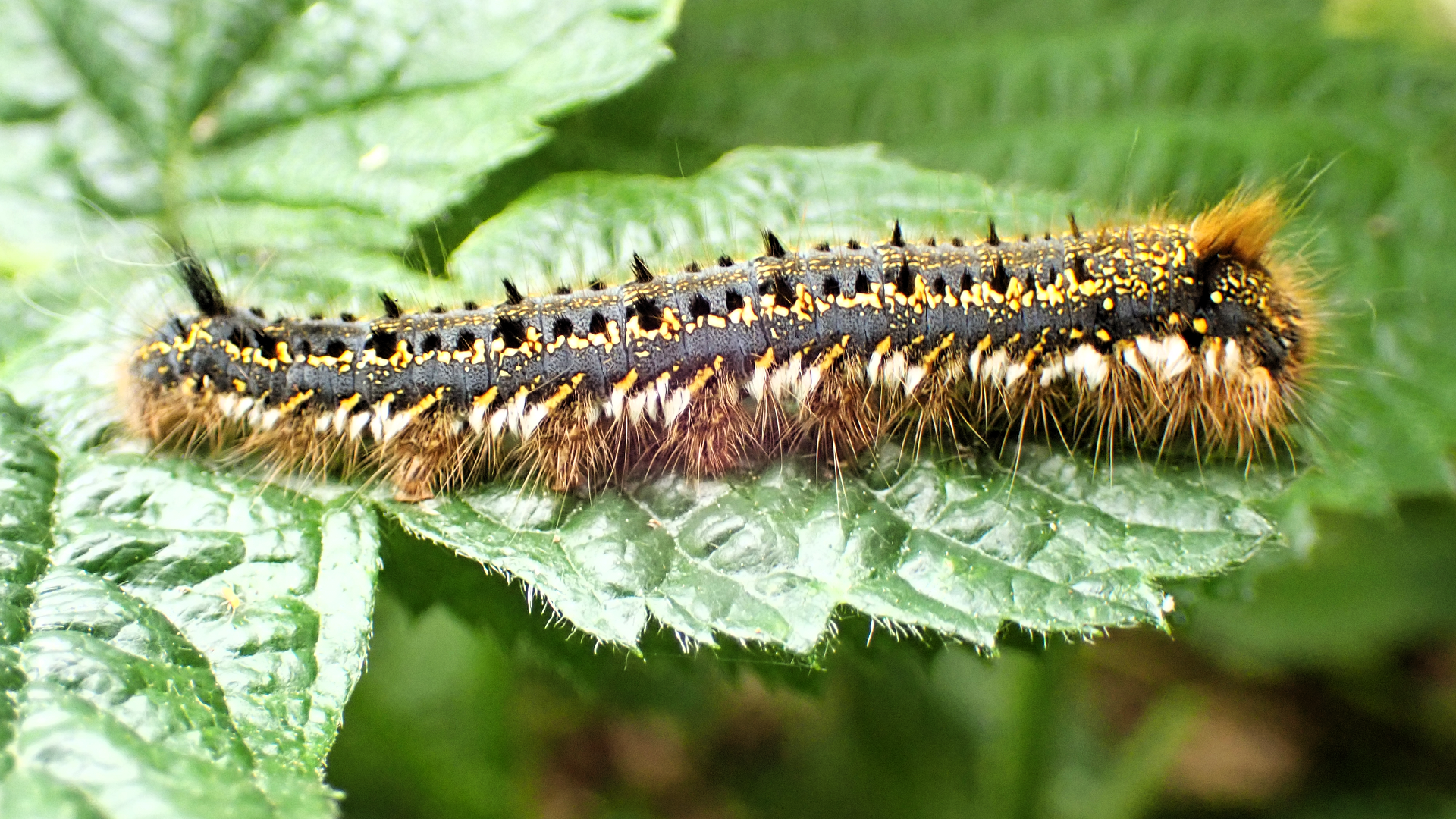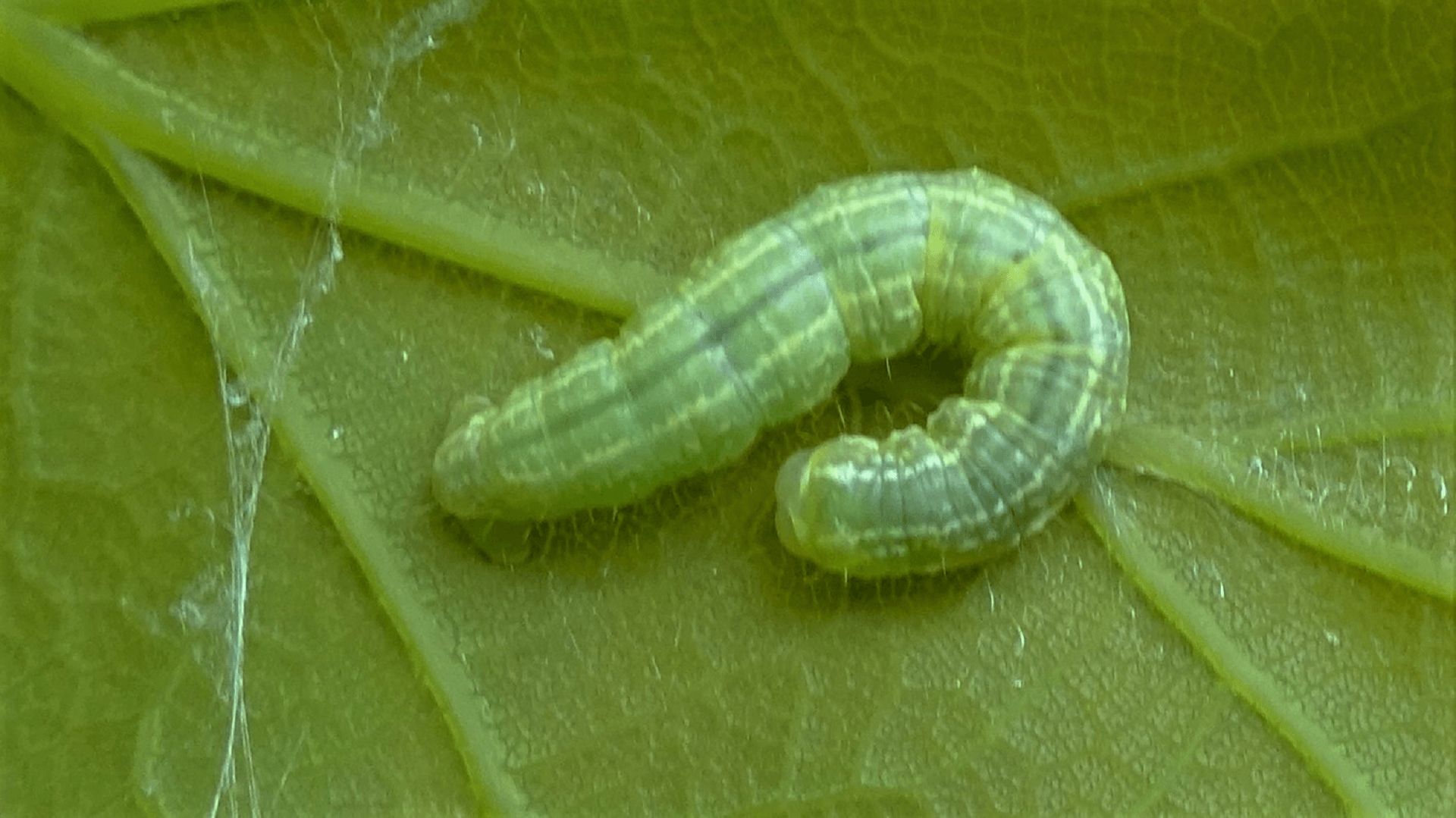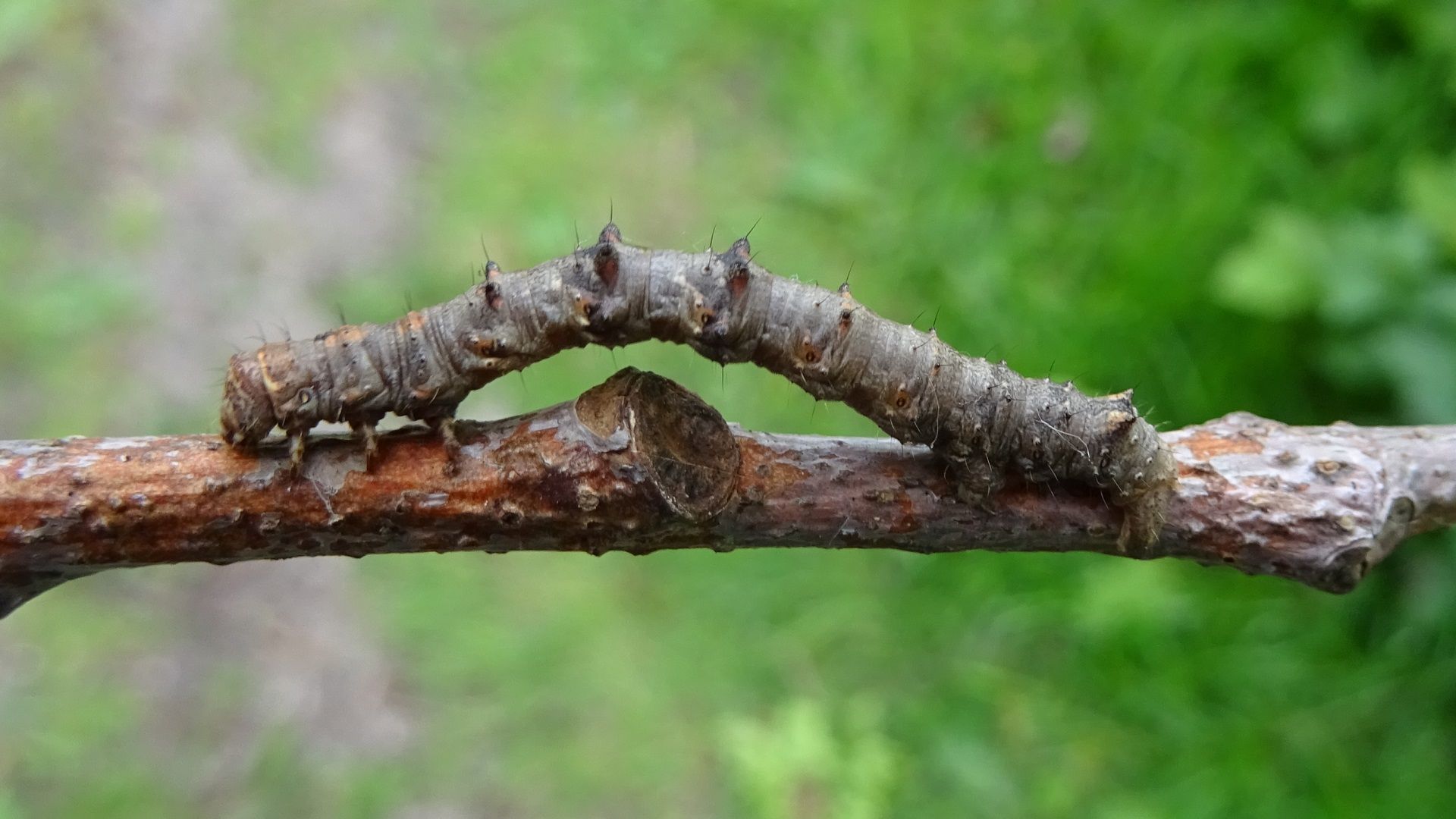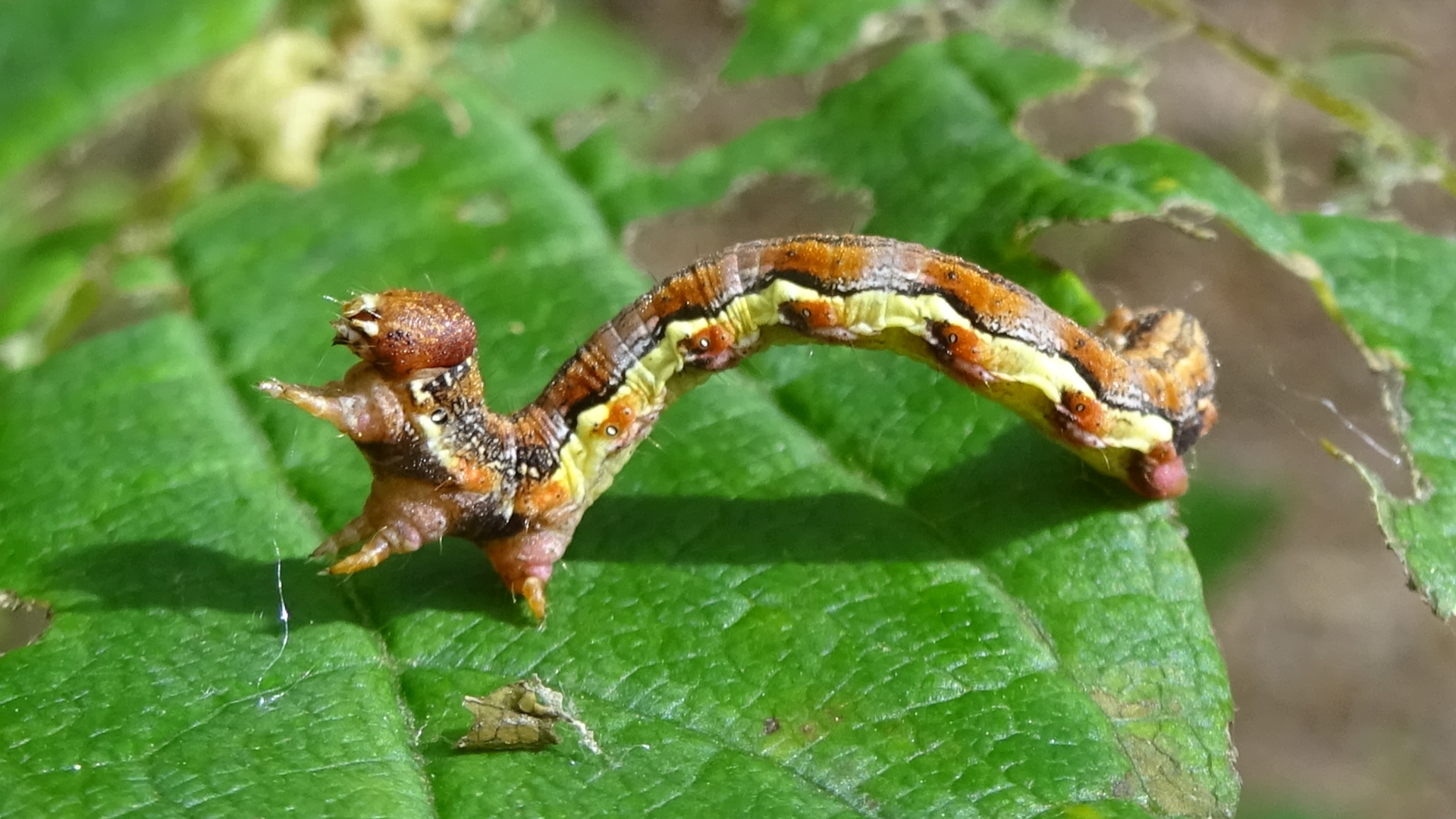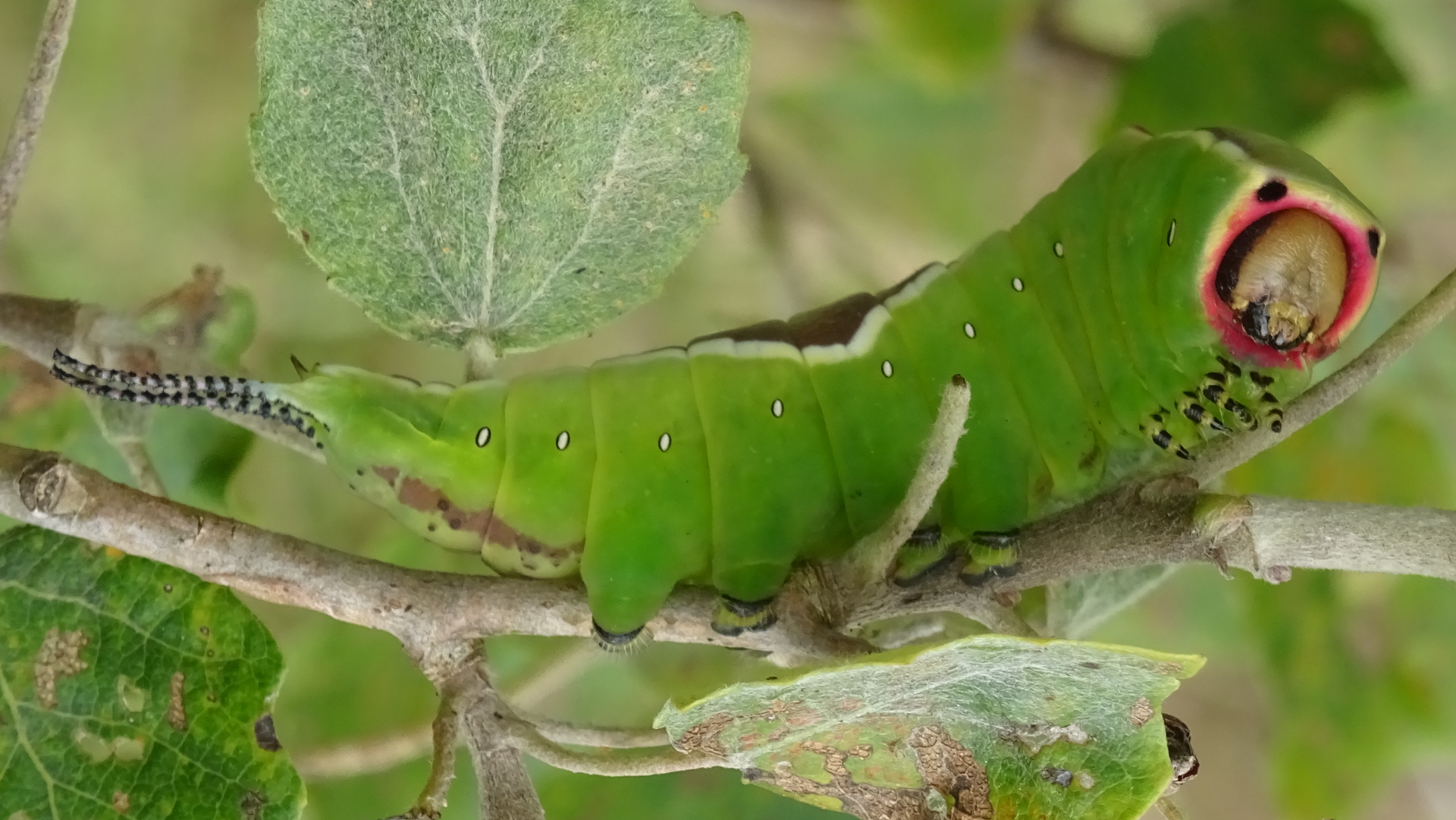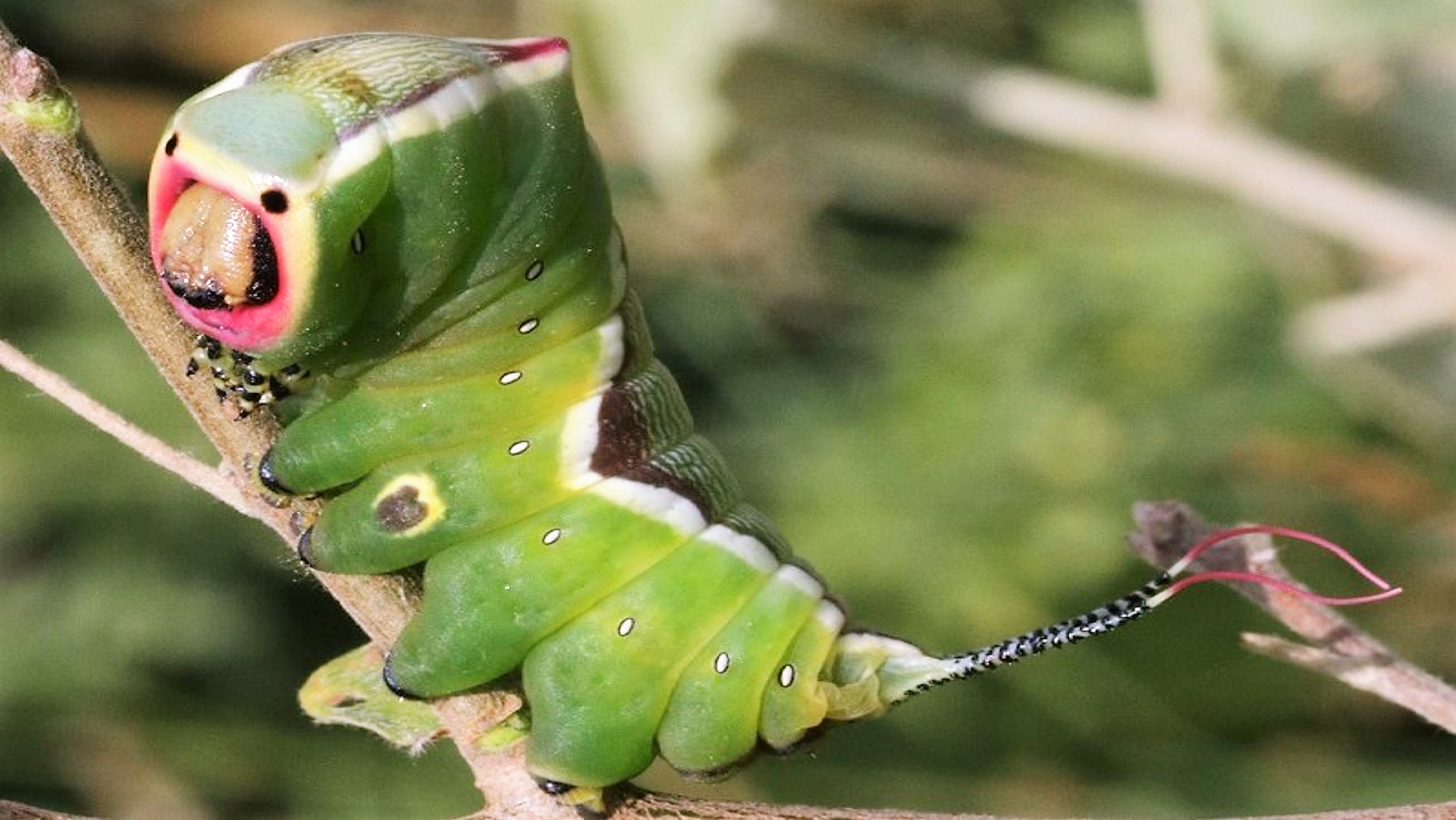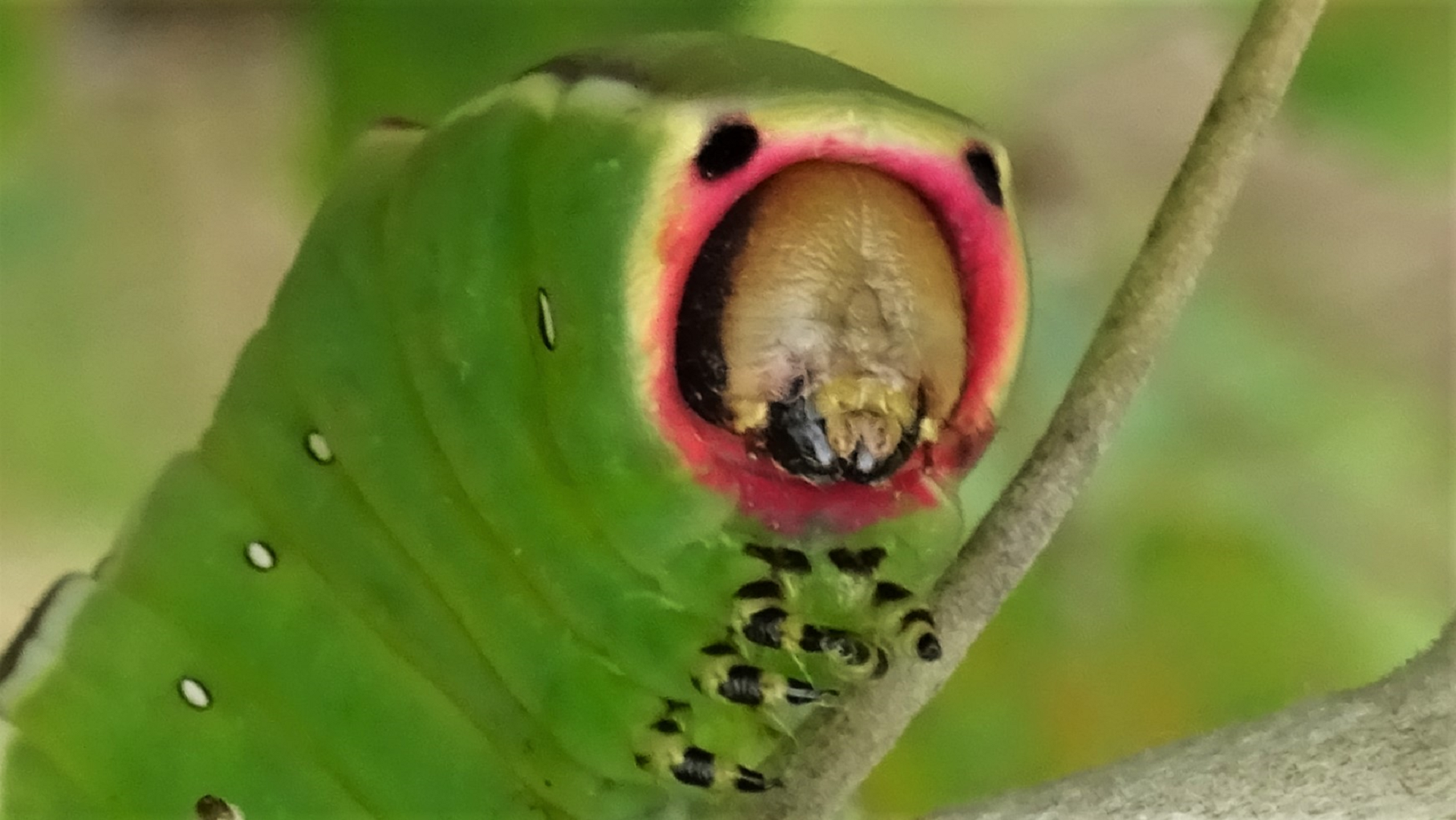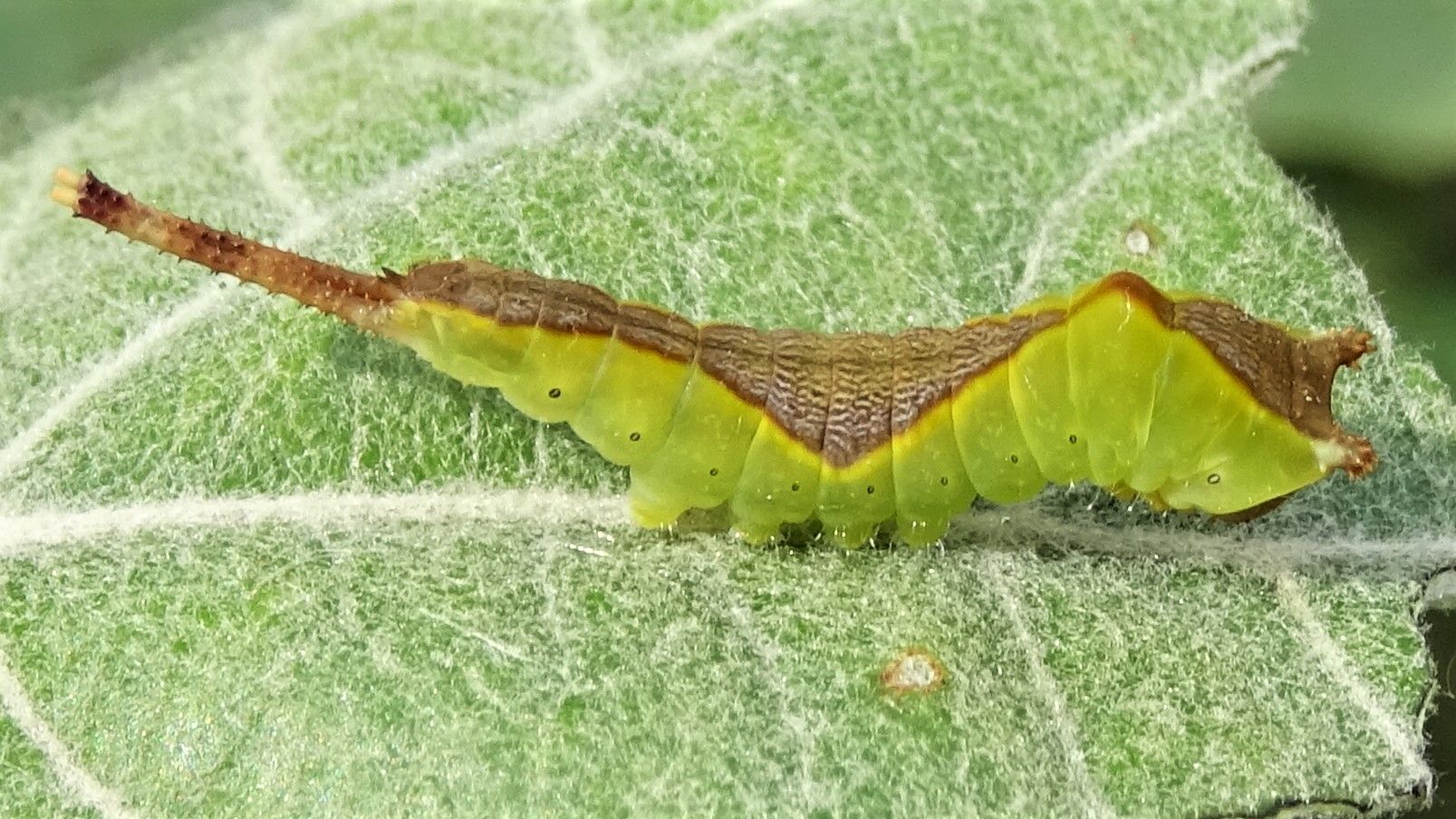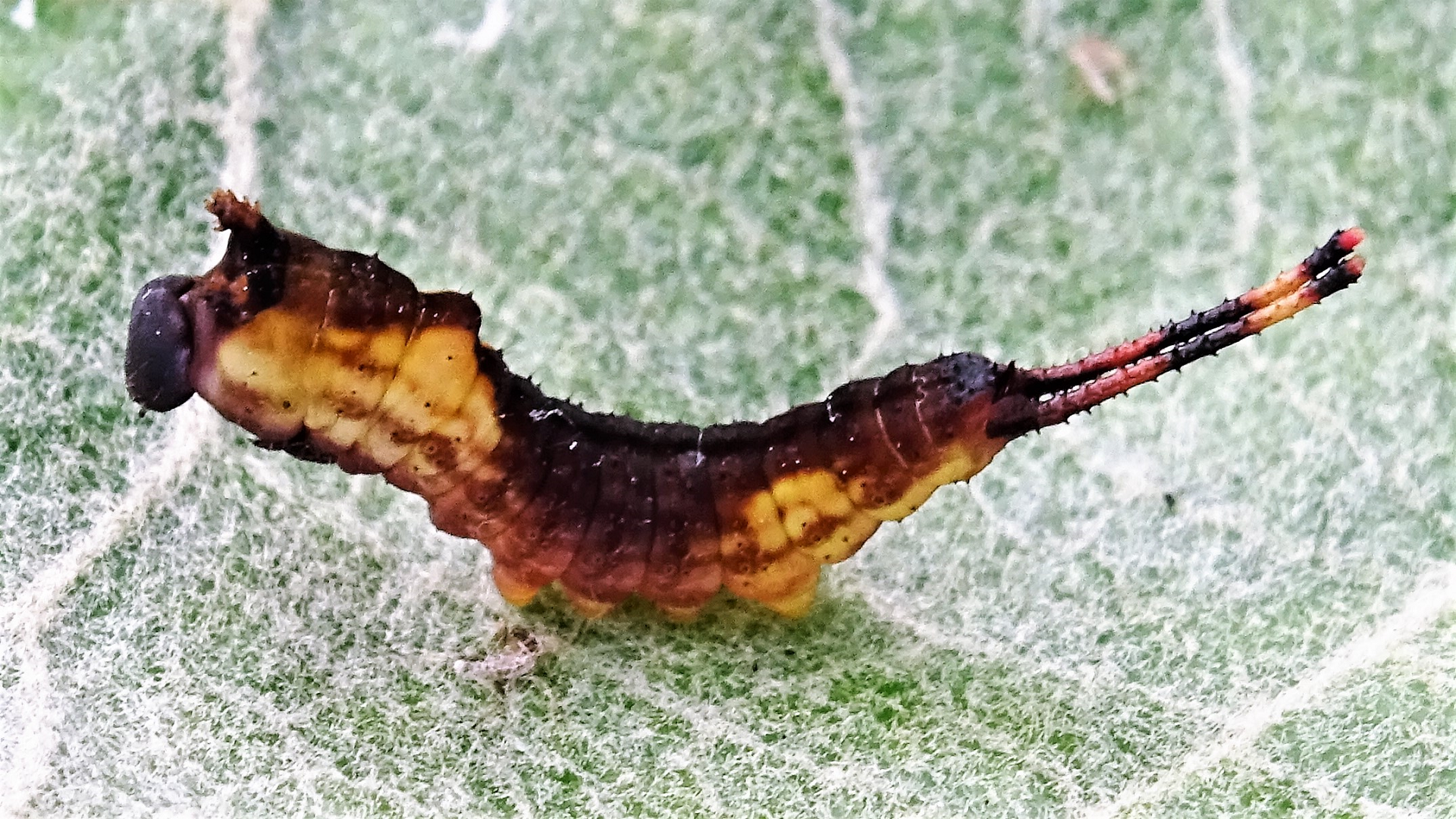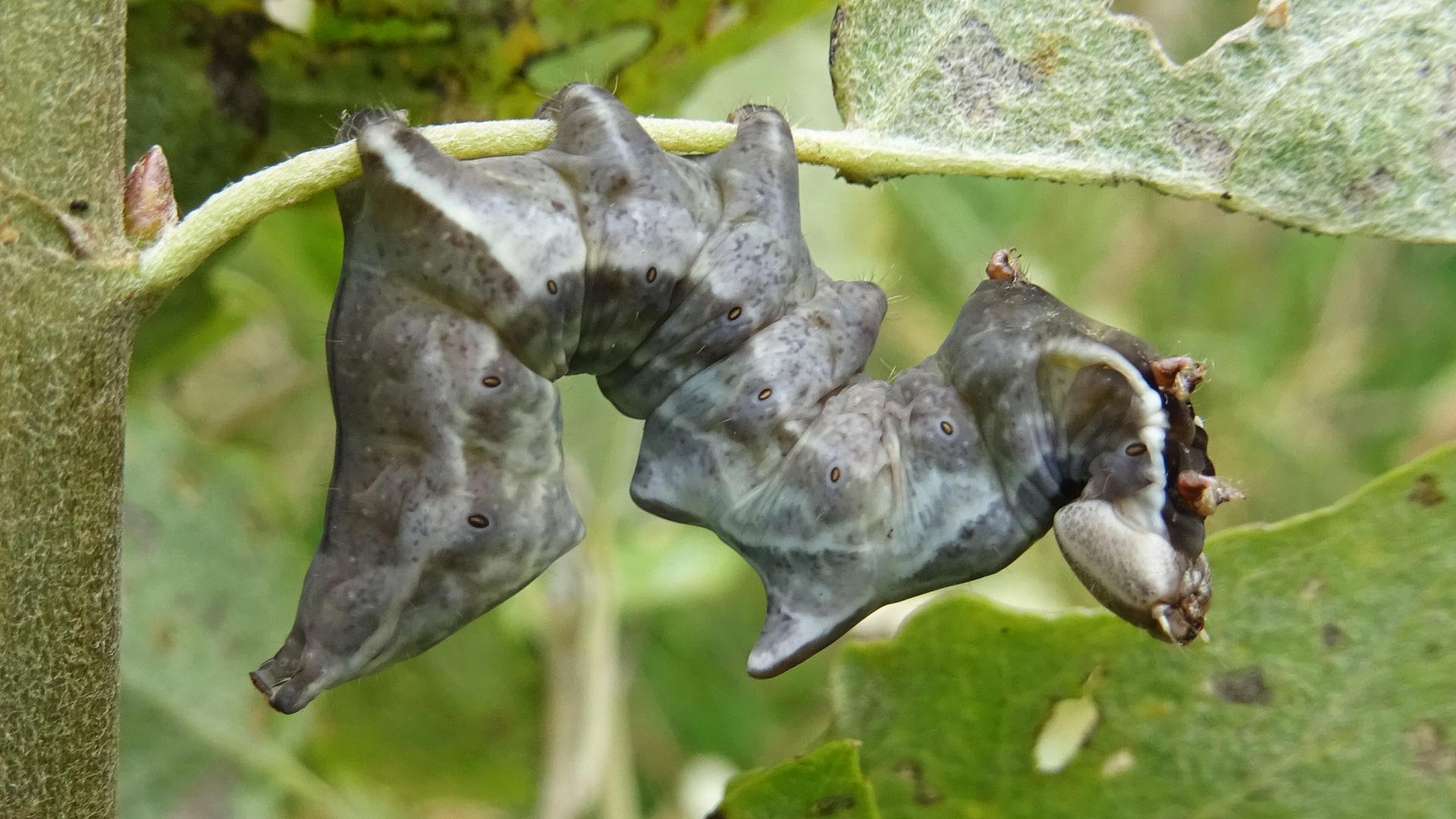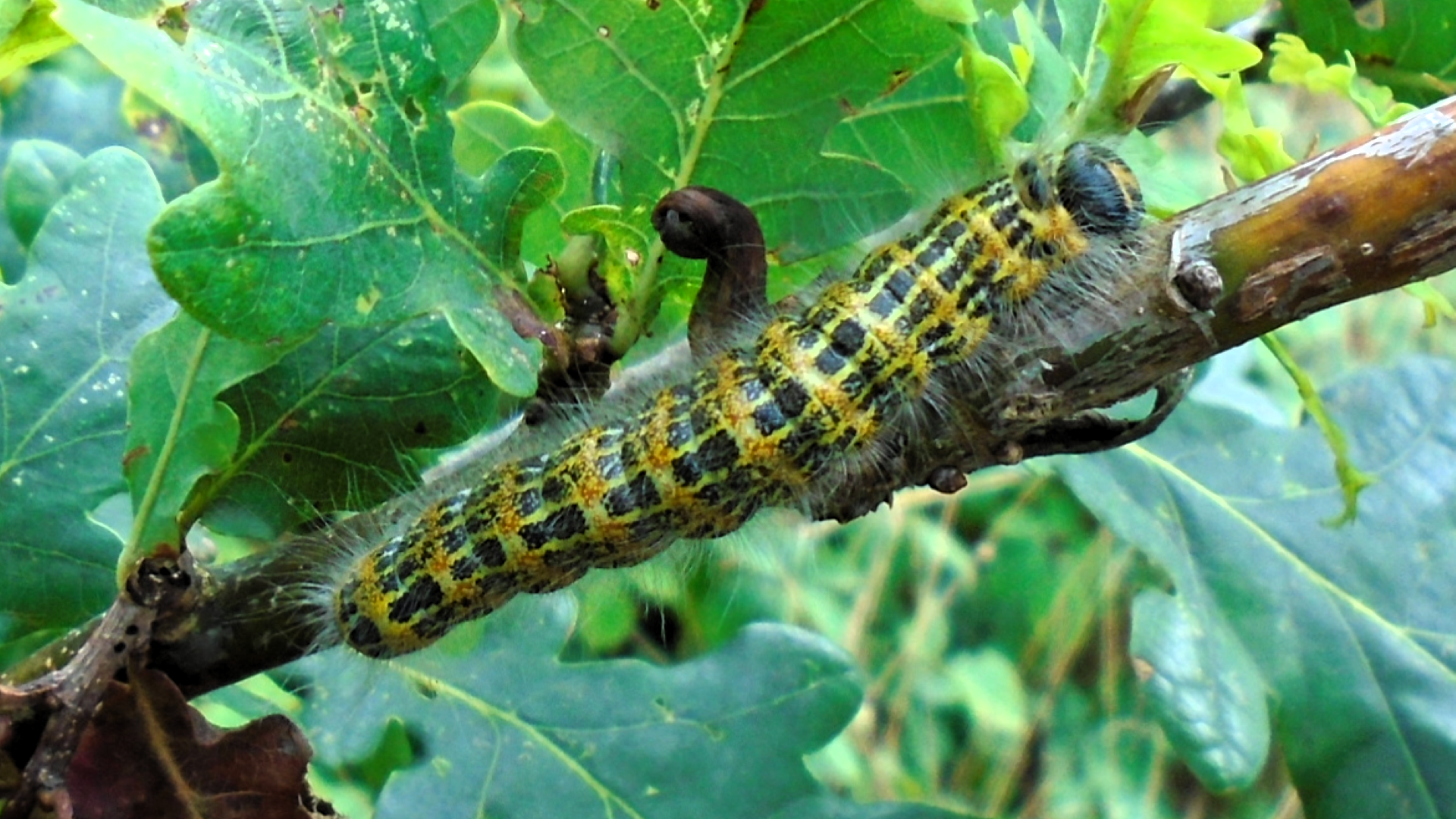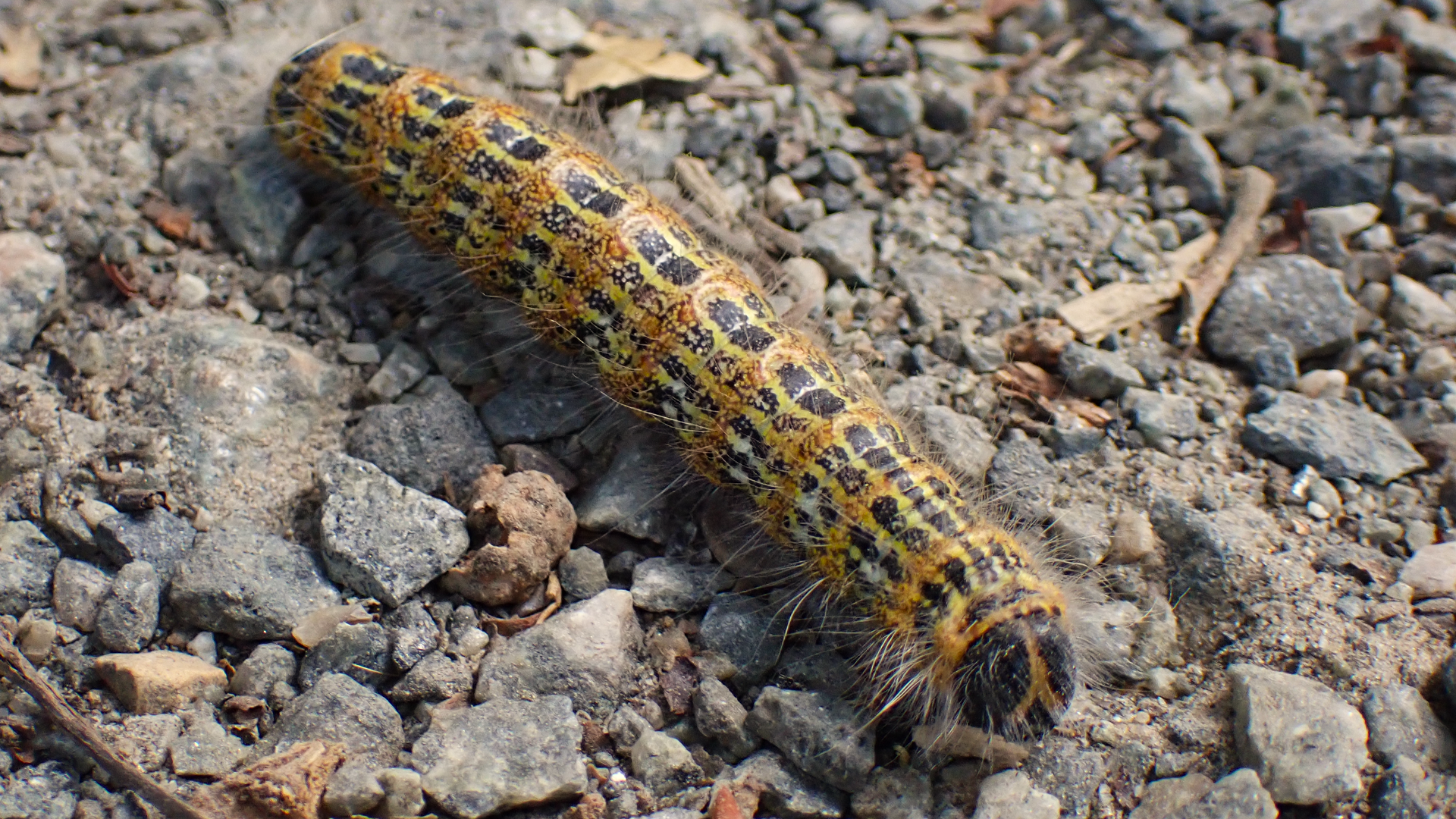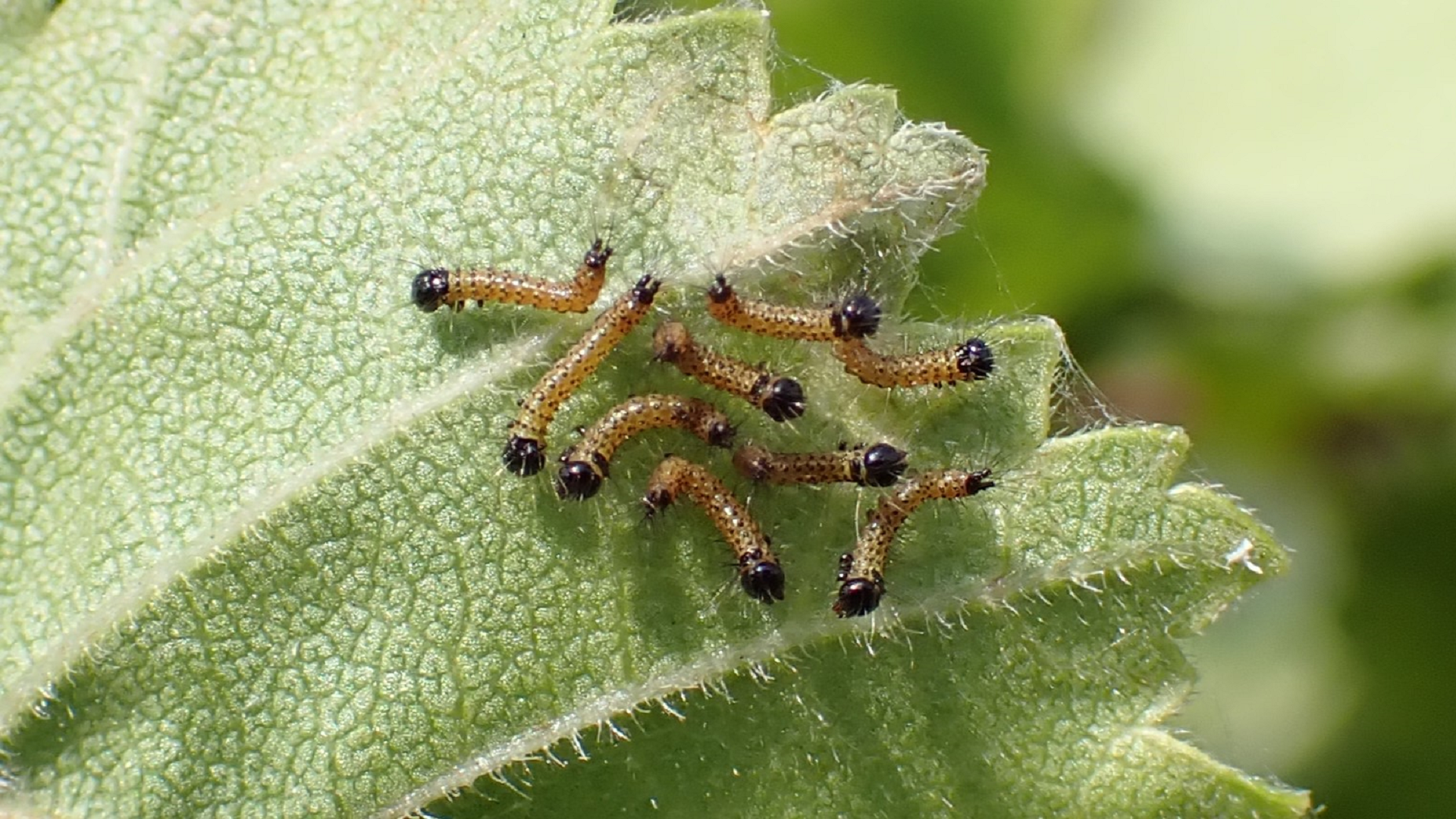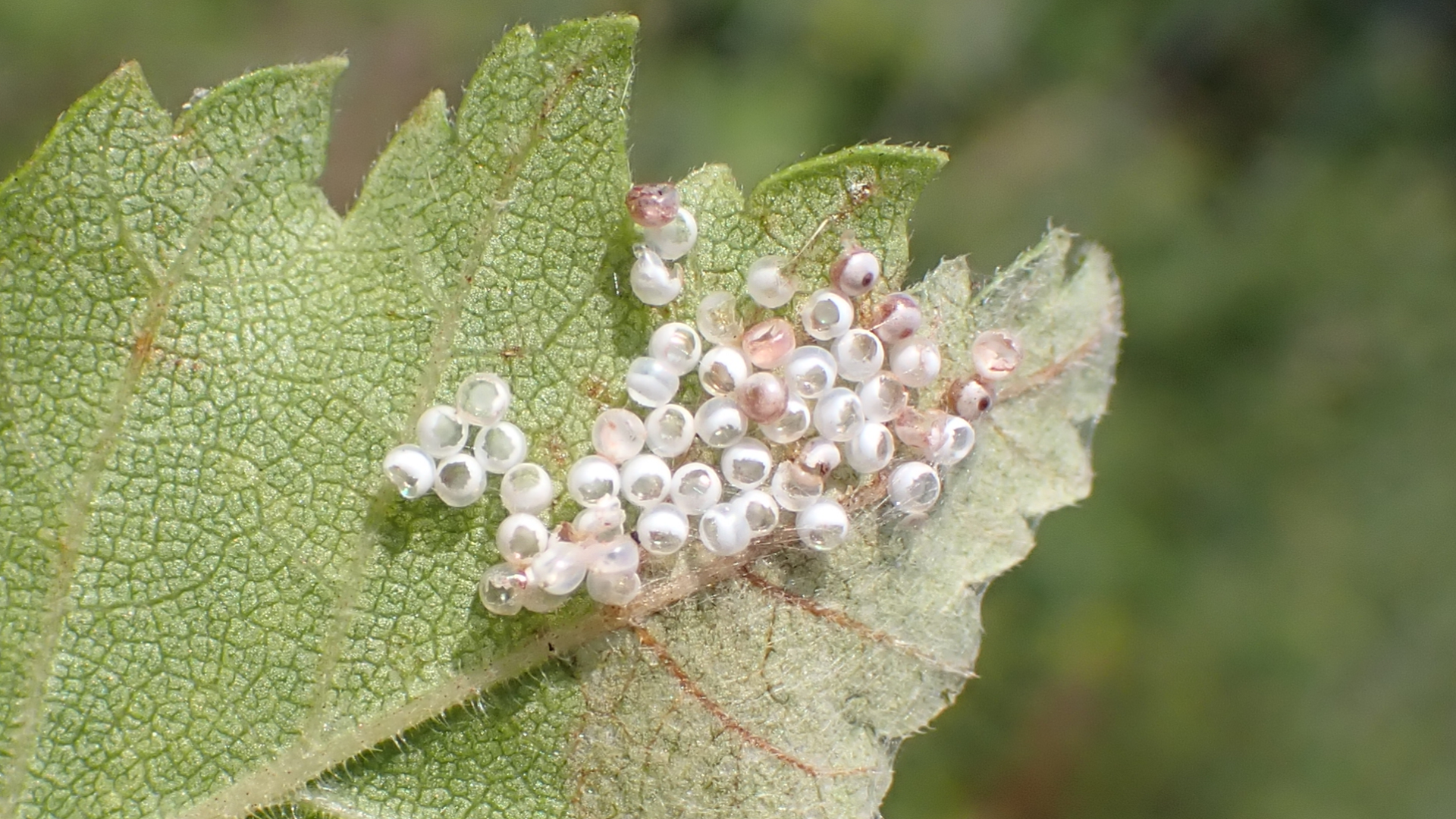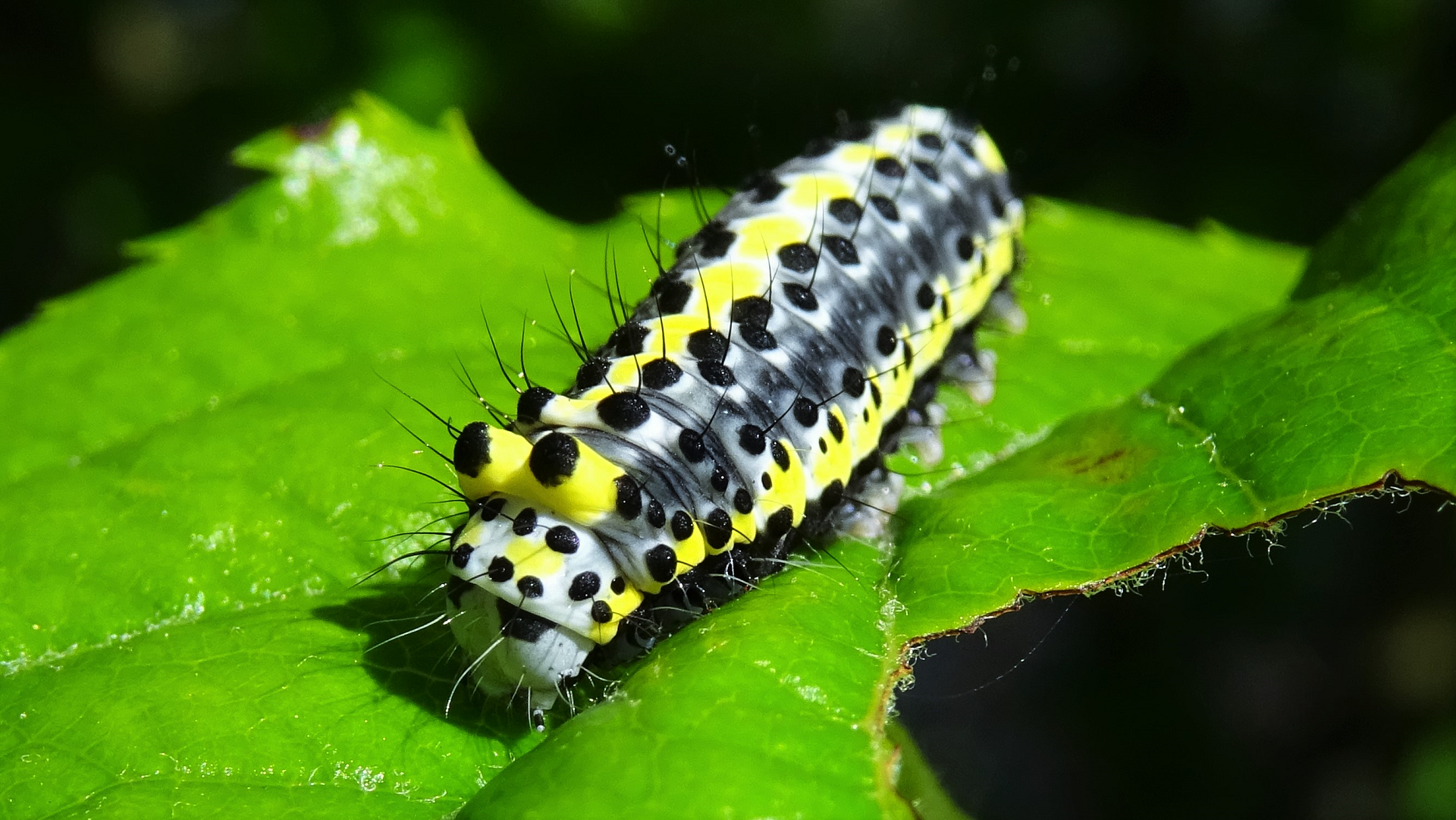MOTHS
MOTH LARVAE
11.009 Ramshorn Bagworm The larvae of this species construct cases from lichens in which they live. Only parthenogenetic (self-fertile) wingless females are known in this species.
32.039 Water-dropwort Brown is a rather plain moth. Its much more attractive larvae feed on flowers and seeds of Hemlock water-dropwort, a highly poisonous plant (to humans) that grows by Hainault Lake. The larvae stitch florets of the umbellifer together with tough silken threads to form a hidden tunnel. They burrow into the stem usually close to a joint and then pop out throughout the day during sunshine. This species was formerly known as the 'Dingy flat-body'.
45.030 White Plume larvae feed on bindweed.
49.014 Brown Oak Tortrix pupa attached to a leaf by webbing.
49.031 Timothy Tortrix The larvae lives in a folded leaf stuck together with threads to create a place of safety for itself.
54.008 Six-spot Burnet larvae feed on Bird's-foot-trefoil.
66.003 Lackey
has brightly coloured caterpillars live gregariously in silk spun webbing. They grow quickly eventually measuring over 5cm long. Foodplants include Hawthorn, Blackthorn, Goat willow and a range of other trees and shrubs.
66.010 Drinker has large hairy larvae that go into hibernation during October and start feeding again from April to June. They drink drops of dew from plants which is how their common name came about.
70.106 Winter Moth larvae hatch during spring as buds are opening and then feed on the leaves. They move from tree to tree by spinning a silk thread and using the breeze to carry them along to the next food source. Early June the larvae drop to the ground where they pupate.
70.247 Pale Brindled Beauty larvae feed on broadleaved trees.
70.256 Mottled Umber larvae feed on broadleaved trees.
71.003 Puss Moth caterpillars (up to 65mm long) are seen from July to September feeding on Poplar and Willow usually low down on saplings. When ready to pupate the caterpillar makes a tough cocoon from chewed wood and silk. If disturbed by a predator the caterpillars raise the head and wave extendable pinkish flagellae from their twin tails. If this warning is ignored the caterpillar is able to squirt formic acid from a slit under the mouth as a defensive measure.
71.013 Pebble Prominent frequents scrub, woodland and grassland habitats. Its larvae feed on poplars, aspens, willows and sallows.
71.025 Buff-tip larval foodplants include Oak, Birch, Sallow and Hazel.
73.033 Figure of Eight's larval foodplants include Blackthorn, Hawthorns, Plum, Cherry and Crab Apple.
© hainaultforest.net. All rights reserved.


